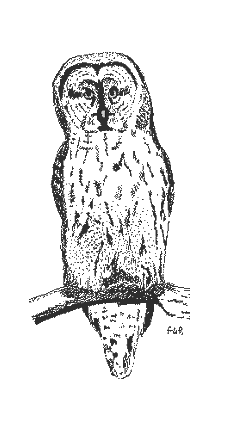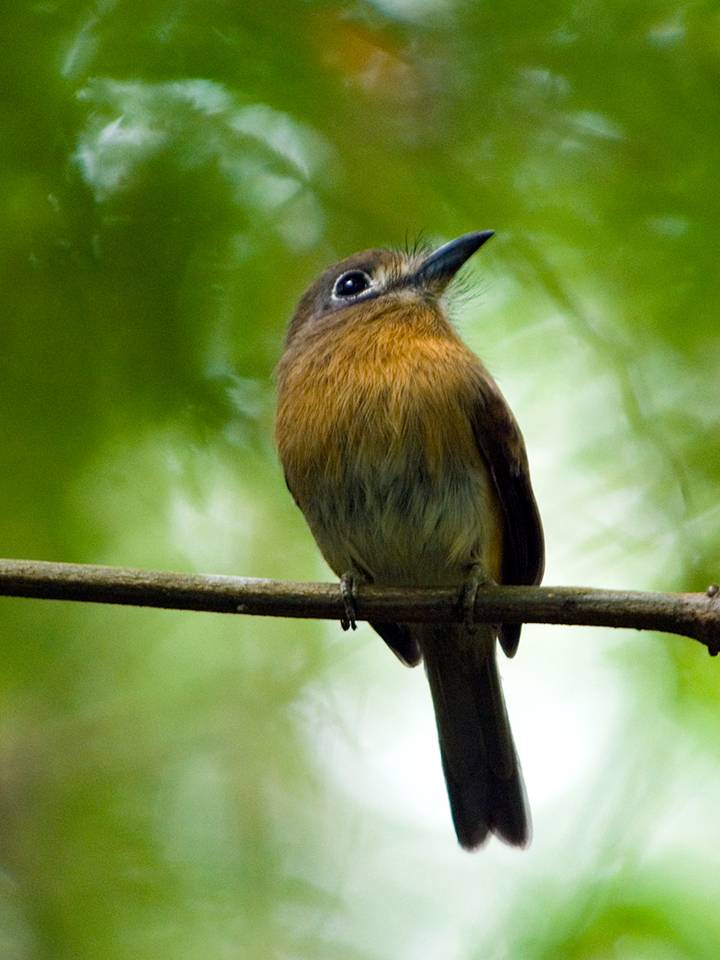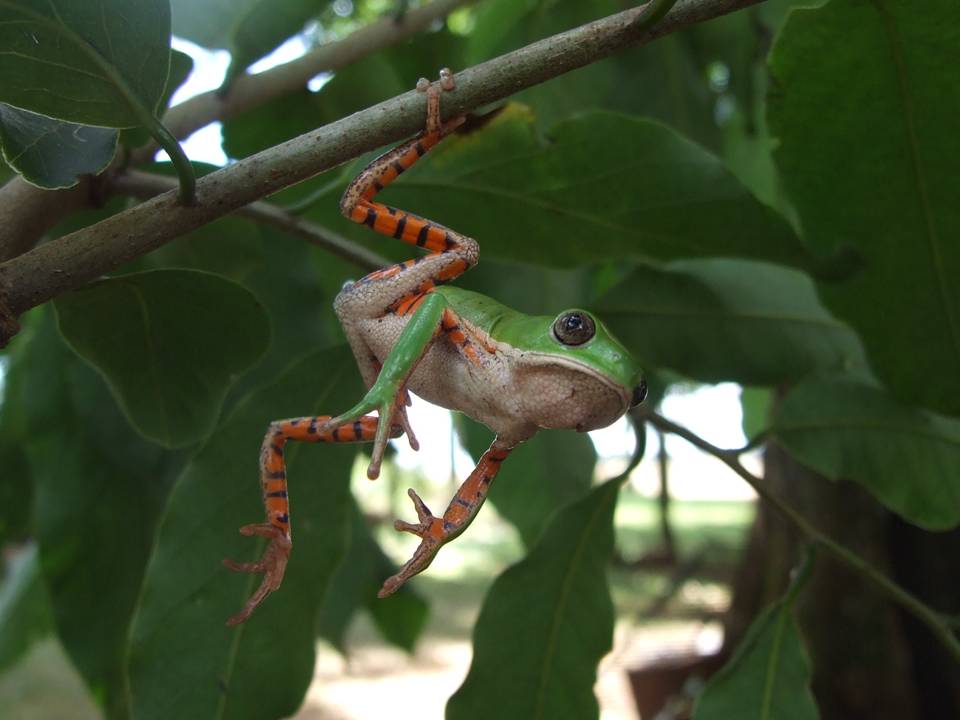Designed by Paul Smith 2006. This website is copyrighted by law.
Material contained herewith may not be used without the prior written permission of FAUNA Paraguay.
Photographs on this page were taken by Christoph Liedtke and Sylvia Qu and are used with permission.
FIGURE OF EIGHT TOUR
Introduction:
Plenty of time on your hands and you just can´t decide which tour to take? Then why not combine them all into this three week epic that visits all of Paraguay´s major habitat types and has been specifically designed to show you as much of the wildlife as is possible in as short a space of time as possible. From the marshy Pantanal to the bushy cerrado, the dry Chaco to the humid Atlantic Forest, the Figure of Eight tour shows the best of what Paraguay has to offer promising a varied list of birds, mammals and other animals.
Earless Leaf Frog (right) Phyllomedusa azurea
FAUNA Paraguay tours are recommended by:
FAUNA Paraguay eco-tours are promoted by:
|
|
|
|
 |
Birdfinders |
|
Main Targets:
Covering all the major habitats in Paraguay our birding targets are the endemic bird species in each habitat and of course we will be looking to record as many of the other species as possible. In the Chaco we will also be looking to build a healthy mammal list, augmented with some additional humid forest species.
Recommended duration:
To get the best from this tour we suggest at least 21 days. A minimum of 19 days is required to complete it.
Best time to visit:
This tour is available year round, omitting the Pantanal leg. The complete tour including the Pantanal leg is available only from May to October. The "rainy season" is from October to November when mud can occasionally be a problem and there are more insects around. However this is also the best time of year for reptiles and amphibians, and marks the crossover of northern and southern migrants. This is a "hard core" trip with lots of travelling involved and is aimed at the ambitious eco-traveler who wants to see as much as possible in a single trip.
Itinerary:
Day 1 - Early departure to Bahía de Asunción. We continue on birding the Ruta Trans Chaco arriving in Loma Plata. Optional night drive.
Day 2 - Continue to Fuerte Olimpo León. Night drive.
Day 3 - River cruise and wildlife-watching in the Fuerte Olimpo area. Night drive.
Day 4 - Continue on to Bahía Negra. Night drive.
Day 5 - River cruise and wildlife-watching in the Bahía Negra area. Night drive.
Day 6 - Continue on to Madrejón, PN Defensores del Chaco. Night drive.
Day 7 - Wildlife-watching in PN Defensores del Chaco. Night drive.
Day 8 - Continue to PN Tte Enciso. Night drive.
Day 9 - Wildlife-watching in PN Tte Enciso and PN Médanos del Chaco. Night drive.
Day 10 - Return to Asunción.
Day 11 - Early visit to Arroyos y Esteros and continue to Laguna Blanca. Night drive.
Day 12 - All day birding and wildlife-watching at Laguna Blanca. Night drive.
Day 13 - Continue to Ciudad del Este and visit to Salto del Monday.
Day 14 - Morning birding at Itabó Itaipú reserve, continuing on in the afternoon to Salto del Guairá.
Day 15 - Morning visit to Carapá reserve. Continue to Hotel Tirol afternoon.
Day 16 - Birding Hotel Tirol in the morning, departure to PN San Rafael in the afternoon.
Day 17 - All day birding at PN San Rafael. Night walk.
Day 18 - Morning birding PN San Rafael, afternoon birding at Estancia Kanguery.
Day 19 - Morning departure for Ayolas birding marshes of Ruta 1 en route.
Day 20 - All day birding at Isla Yacyreta. Night walk.
Day 21 - Return to Asunción and end of services.
(Itineraries are subject to change according to levels of animal activity or client´s preference.)
What else might we see?:
With hopefully a good start to our bird list at the Bahá de Asunción, we will cross the Rio Paraguay, leisurely birding the roadside pools in the Humid Chaco which are often replete with waterbirds. We might expect to see various heron species, Jabiru, Maguari and Wood Storks, Roseate Spoonbill, Savanna, Great Black and Black-collared Hawk, Snail Kite, Limpkin, Giant Wood-Rail, Wattled Jacana, Plumbeous, Bare-faced and Buff-necked Ibis amongst the huge flocks that gather. We´ll make a brief stop for lunch at Pirahú, famous nationally for its empanadas and also a decent birding stop, we might see Swainson´s and Brown-crested Myiarchus, Yellow-billed Cardinal, Vermillion Flycatcher, White-faced Whistling-Duck and Brazilian Duck amongst others whilst Spectacled Caiman is another possibility.
We arrive in the Central Chaco mid-afternoon and there will be time to clean up before heading out on our night drive. Nightdrives in search of mammals are a major bonus on this tour and as many as ten species in a single evening may be recorded, species like Geoffroy´s and Little Spotted Cat, Three-banded, Six-banded and Lesser Hairy Armadillo, Crab-eating and Azara´s Fox, Crab-eating Raccoon, Grey Brocket Deer, Capybara, White-lipped and Collared Peccary and Chaco Mara being frequently encountered. Of course we´ll also be looking for birds too - Great Horned Owl, Tropical Screech-Owl, Scissor-tailed and Little Nightjar, Pauraque for example. At certain times of year this area is alive with a chorus of frog song. We may see Paradox Frog, Fuscous Frog, Horned Toad and Granulated Toad, Shovel-nosed Chamber Frog and Weeping Dwarf Frog amongst others. Reptiles might include Green Jungle Runner, Western Collared Spiny Lizard and Pointed-nosed False Chameleon.
The next leg of our journey takes us through the Dry Chaco towards the Pantanal. En route we will make some brief stops in Chaco scrub and forest in search of some Chaco specialities - we´ll be looking out for Scimitar-billed and Great Rufous Woodcreeper, Red-billed Scythebill, Stripe-backed Antbird, Great and Barred Antshrike, Golden-green, Checkered, Cream-backed and White-fronted Woodpeckers, Lowland Hepatic and White-lined Tanagers, Chaco Earthcreeper, Black-capped Warbling-finch, Orange-backed Troupial, Little Thornbird and Many-coloured Chacofinch. Other characteristic species of the area include Lark-like Brushrunner, Solitary Cacique, Crested Hornero and Chaco Chachalaca.
As we get closer to Fuerte Olimpo we will notice that the habitat becomes gradually wetter and more humid. Here we may find Grey-necked Wood-Rail, Blue-crowned Trogon and Rufous-fronted Thornbird and we will look out for Dusky Titi and Black Howler Monkey in the tree-tops. Fuerte Olimpo itself is set on the Rio Paraguay and we will arrive in time for a delicious fish lunch of fresh oven-baked Pacu caught that same day - we can eat whilst watching the Green Iguanas chase each other through the riverside vegetation. If your energy levels are up for it we will make our first night drive in the surroundings, looking not only for mammals but also at the amazing diversity of frogs - everything from Purple-barred Tree-frog and Warty Snouted Tree-frog, to the distinctive White-lipped Tree-frog and larger terrestrial species like Ocellated and Chaco Frogs. Mammals may include Tamandua and Giant Anteater, both of which are fairly common in the area, as well as Crab-eating Fox, Coati and others.
The following morning we take our first boat cruise on the river, exploring tangled channels for Marsh Deer and Capybara. The sheer quantity of waterbirds here is breathtaking, with flocks of Neotropic Cormorant, egrets and waterfowl such as Muscovy Duck and Fulvous Whistling-duck scattering before our boat. If we are fortunate enough we may even catch a glimpse of a Sungrebe on one of the weed-choked waterways, whilst the throaty voice of Mato Grosso Antbird will betray its location.
Heading north from here we are in the Pantanal proper. Crested Oropendola and Golden-collared Macaw will be two of the more conspicuous species that we begin to notice, but we will also be birding wet marshy areas in search of Xenopsaris and White-lored, Rusty-backed and Cinereous-breasted Spinetails. Fawn-breasted Wren and Common Tody-flycatcher are charismatic inhabitants of scrubby areas, but we´ll need a bit more patience to call out White-backed Fire-eye. Our destination is the tiny and isolated settlement of Bahía Negra. Birding around the town might bring Crane and Bicoloured Hawk, Swallow-tailed Hummingbird, Suiriri Flycatcher, Green-cheeked and Blaze-winged Parakeet, while after dark we will look out for Band-tailed Nighthawk flying along the river. The following morning during our river cruise however we would hope to add both Grey-crested Cacholote and Silver-beaked Tanager to our lists, and maybe even Rufous-tailed Jacamar, while Giant Otter is the more exciting possibility amongst the mammals. We will also visit the "three-frontiers" area where Paraguay, Bolivia and Brazil all meet.
From here we will head back towards the Ruta Trans-Chaco. The area around PN Defensores del Chaco is famed for the ease at which you see wild cats. Jaguar and Puma are definite possibilities, as well as smaller cats such as Jaguarundi, Ocelot and Geoffroy´s Cat. Lowland Tapir is common here, as well as other mammals such as Chaco, Collared and White-lipped Peccary, Night Monkey, Dusky Titi and Three-banded Armadillo. We will spend several hours after dark searching for mammals in an effort to tick off as many species as possible in the time available. There are some special birds here too including Golden-collared Macaw, Great Antshrike and Bolivian Slaty-antshrike. Night drives staking out watering holes around the time might bring us Lowland Tapir, Tayra, Azara´s Agouti and if we are lucky maybe even a Jaguar or Puma.
Arrival at PN Tte Enciso greatly increases our prospects of seeing the representatives of the Chaco "Big 6" bird species - Quebracho Crested-Tinamou, Black-legged Seriema, Chaco Owl, Crested Gallito and Spot-winged Falconet are all easier to see here than in other parts of the Chaco, whilst other species such as the popular Black-crested Finch, Cinereous Tyrant, Stripe-crowned Spinetail, Harris and Zone-tailed Hawks, endangered Crowned Eagle and the handsome Black-backed Grosbeak are also possible additions to the list. Enciso is also a fantastic mammal-watching spot with Puma, Jaguar and Lowland Tapir regularly encountered here, along with other strictly Dry Chaco species such as Plains Viscacha, Greater Hairy Armadillo and Chaco Peccary. Rococo Toad is common here, as are reptile species including Chaco Leaf-footed Gecko, Chaco Straight-toed Gecko and the gorgeous Four-toed Whiptail Lizard.
After a night of comfort at a top Asunción hotel, we will proceed to Arroyos y Esteros where we hope to find the first the aptly-named Strange-tailed Tyrant. This bizarre bird breeds in wet grassland next to marshes and we will also be looking out for Crested Doradito, Yellow-rumped Marshbird, White-headed Marsh-Tyrant, Long-tailed Reedfinch as well as other more conspicuous species such as White-faced and Bare-faced Ibis, Maguari Stork, Savannah and Great Black Hawks, Limpkin and Snail Kite.
After a lunch stop we will continue on to Laguna Blanca where we will have an hour or two to settle in during the hottest part of the day and make the most of the gorgeous sandy beach and crystal clear lake before heading out birding again. We will bird the area around the accommodation where we might expect Rusty-backed Antwren, Rufous Casiornis, Short-crested Myiarchus, Purplish Jay and various seedeaters amongst many others. After dark we will head out into the cerrado for some nightbirding. Little and Scissor-tailed Nightjar are amongst the most frequently seen species, as well as Great Potoo, Tropical Screech-owl, Rufous Nightjar and of course our target bird the critically endangered White-winged Nightjar. The following day birding in the cerrado we will concentrate on the cerrado endemics such as Curl-crested Jay, Black-throated Saltator and the globally-threatened Lesser Nothura, this being the only known site for this bird outside of Brazil. Other locally-distributed birds that we might encounter here include White-rumped Monjita, White-rumped Tanager and the remarkasbly shrike-like White-banded Tanager, a near-threatened species that is fairly common here.
Our main reason for visiting Salto del Monday, apart from the fantastic waterfall, is to witness the remarkable arrival of the Great Dusky Swifts coming to roost at dusk. Thousands of them amassing like a cloud of mosquitoes high over the falls before firing themselves torpedo-like one by one to their roost places behind the falling water. A truly magnificent spectacle. Other swift species are sometimes present, including White-collared Swift. Itabó Itaipú will be our first Atlantic Forest site and our species list will begin to pick up exponentially here as we take advantage of the multitude of species that inhabit the forest. Amongst the most spectactular are Red-breasted Toucan, Surucua Trogon and Rufous-capped Motmot but we´ll also be on the look out for more secretive forest denizens such as Southern Antpipit, Rufous Gnateater and Saffron-billed Sparrow. A short diversion to Carapá will be in search of the endangered Vinaceous Amazon, as well as two other birds with an extremely localised distribution in Paraguay, the White-wedged Piculet and Horned Screamer.
Hotel Tirol perfectly encapsulates the spirit of the Atlantic Forest without ever having to stray too far from the hotel bar! Even from the balcony it is possible to admire the colourful mixed flocks that skip through the tree-tops, species such as Purple-throated, Chestnut-bellied and Violaceous Euphonias, Blue Dacnis, Blue-naped Chlorophonias and Swallow-Tanagers, mixing with Tropical Parula, Guira Tanager and hyperactive Chestnut-vented Conebill. Circling in the skies above the canopy you might expect to see Sick´s and Grey-rumped Swifts, vultures and with a little luck other raptors including Rufous-thighed Kite and Short-tailed Hawk. And then of course there are everybody´s favourites, the lovely Manakins, with two species present in the forest, Band-tailed and Blue Manakin, both will literally take your breath away.
At San Rafael we will be in officially the most biodiverse reserve in Paraguay. Forest birding requires patience and you´ll need your wits about you, the birds here can be secretive and many don´t like to give themselves up easily. Species like Plain Antvireo, Variable Antshrike, Rufous-capped and Grey-bellied Spinetails are common enough but require patience to see, others such as Black-goggled and Ruby-crowned Tanagers, White-browed and Golden-crowned Warblers will come to us - they like to let you know they are watching you as well! One of the golden rules of birding in the Atlantic forest is that the more time you spend looking the more you will see, biodiversity is so high here that there are always rewards for the persistent birder. We may spook Tataupa and Brown Tinamous or White-tipped Dove feeding on a forest trail for example, whilst Rufous-capped Motmot and Squirrel Cuckoos are surprisingly good at evading detection despite their size. Patches of bamboo have their own bird communities where Yellow Tyrannulet and Sepia-capped Flycatcher hang out, as well as the threatened Blackish-blue Seedeater and the attractive Dusky-tailed Antbird. Antbirds in fact are amongst the best represented bird families in the Atlantic Forest, but all are more easily heard than seen - species like White-shouldered Fire-eye, Short-tailed Antthrush, Tufted Antshrike and Rufous-winged Antwren will be amongst those that we will be hunting down. For tickers we will come across a host of dull-coloured forest flycatchers, species like Sepia-capped, Bran-coloured, Fuscous, Euler´s etc etc, then there are Mottle-cheeked Tyrannulets, Piratic, Grey-hooded and Variegated Flycatchers - the list goes on and on, and I haven´t even mentioned the Furnarids yet - notably the White-eyed, Buff-fronted and Ochre-breasted Foliage-gleaners. But for those who just like to look at colourful birds there is more than enough to keep us busy, with the trusting Surucua Trogon, sociable Chestnut-eared Aracaris, eyecatching Saffron and Spot-billed Toucanets, the imposing Red-ruffed Fruitcrow and you can´t fail to be impressed by the vocal abilities of Plush-crested Jays and Red-rumped Caciques.
Estancia Kanguery is a grassland site that will be one of our stake-outs for Streamer-tailed and Cock-tailed Tyrants. Additionally Capped Seedeater, Saffron-cowled Blackbird and Grass Wren are possibilities here and, with some luck, Giant Snipe will be roding after dark. Other species we should see here include Chimango Caracara, Yellow-bellied Elaenia, Red-winged Tinamou and Chalk-browed Mockingbird as well as many others.
Stop-offs at marshes along the way to our next destination Ayolas will give us more chances to find the rare and nomadic Saffron-cowled Blackbird and perhaps even its equally stunning Scarlet-headed cousin. Long-tailed Reedfinch is a possibility here too as well as flocks of seedeaters which during October and November may include Chestnut, Dark-throated, Marsh, Tawny-bellied and Rufous-rumped.
The pristine flooded grasslands of Isla Yacyreta are perfect for the last of our strange-tails, the Sharp-tailed Tyrant. They also offer the opportunity to compare Wedge-tailed and Lesser Grassfinch at close quarters, both species are present here. Grassy marshes may hold Crested Doradito and with some luck we will find a Pinnated Bittern looking for his dinner. Both Yellowish and the threatened Ochre-breasted Pipit are present here, whilst White-tailed Hawk are usually circling around. We´ll visit the wet forest here too where Bare-faced Currasow, Orange-headed Tanager and Olive Spinetail will be on our list.
After dark our second "weird-winged" nightjar, the remarkable Sickle-winged comes out to play. Its not the only nightbird here though. Little, Rufous and Scissor-tailed Nightjar are also here, as is Pauraque and two rarely-seen owls, the Striped and Stygian Owl. Mammals are plentiful here too, Capybara, Azara´s Agouti, Pampas Cavy and Black Howler Monkey amongst the possibilities.

Rusty-breasted Nunlet Nonnula rubecula
What does it include?:
The price includes pick-up from and return to Asunción hotel, accommodation, transport, food, non-alcoholic drinks and guiding fees.
It does not include travel insurance, personal expenses, alcoholic drinks or travel costs incurred before the beginning of the tour or after return to Asunción.
For further information or to book your tour email us at faunaparaguay@yahoo.com.ar
Pantanal visit available May to September only, or at other times of year if conditions permit.




